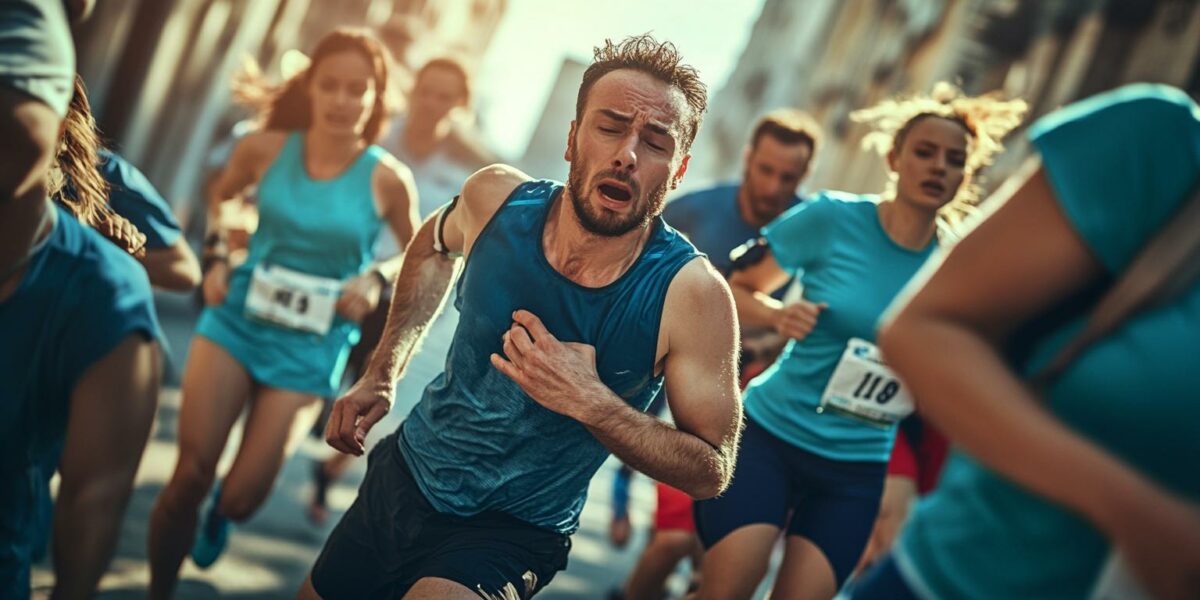The Hidden Dangers of Heat in Marathons
Runners often embrace challenges, but the increasing heat levels due to climate change are posing grave threats. Exertional heatstroke occurs when the body overheats during physical activity, leading to dangerous conditions like fainting or blackouts. Immediate cooling is crucial, yet many races lack the necessary resources to provide this life-saving treatment.
Heatstroke doesn’t just cause immediate symptoms; its effects can be long-lasting. Muscle breakdown can release harmful proteins into the bloodstream, potentially damaging kidneys. The digestive system’s lining may weaken, allowing bacteria to leak into the body. Even brain cells can die from extreme heat exposure.
Popular races, like the Falmouth Road Race, are particularly risky. With its 7-mile course, runners have a high chance of overheating, especially if they’re not adequately prepared or hydrated. Over 11,000 participants mean that some are likely to face heat-related issues.
Fortunately, Falmouth has robust medical support. Dr. John Jardine has led efforts to manage nearly 500 heatstroke cases over two decades, turning the race into a subject of research. However, not all races have such extensive resources, raising the risk for participants.
Challenges in Providing Adequate Medical Care
Many smaller races struggle to meet the medical needs essential for treating heatstroke effectively. Douglas Casa of the University of Connecticut’s Korey Stringer Institute highlights the gap in resources, especially in local 5K races. These events often lack comprehensive medical setups.
Effective treatment for heatstroke includes rapid cooling, ideally by immersing the victim in ice water. Quick diagnosis is vital for timely intervention, often requiring rectal thermometers to accurately measure internal body temperature.
Casa emphasizes, “If someone’s temp gets under 104 within 30 minutes of the presentation of heatstroke, no one has ever died.” This underscores the importance of immediate and proper medical care.
Some key considerations for race directors include:
- Organizing complex events with varied resources
- Ensuring adequate medical care
- Effective communication with runners about heat risks
Dave McGillivray, a race director, stresses the importance of preparing runners for hot conditions. During the 2012 Boston Marathon, he urged participants to slow down due to the heat, preventing a medical crisis despite over 2,000 needing treatment.
Personal Stories of Heatstroke
Evan Hauptmann, a high school athlete, experienced the dangers firsthand when he collapsed during the Falmouth Road Race. His body temperature soared to 112.8 degrees, an almost fatal level. Immediate medical intervention saved his life, and he resumed sports with a newfound awareness of heat risks.
In contrast, Zoë Wallis faced a traumatic experience during a college basketball run. Pushed beyond her limits, she collapsed and suffered organ failure. This event had a lasting impact on her mental and physical health, leading her to eventually leave the sport.
These stories illustrate the severe risks associated with heatstroke and the importance of proper medical care and self-awareness during races. Understanding the signs and taking preventative measures can be life-saving.
Wallis’ experience highlights the long-term consequences of heatstroke. Despite resuming practice, her perception of the sport changed, and it took years of therapy to recover mentally. Her story is a powerful reminder of how heat can affect athletes beyond the physical symptoms.
Balancing Safety and Passion
While running carries some risks, the overall health benefits are significant. Dr. Aaron Baggish notes that runners have a reduced risk of heart disease compared to non-runners, emphasizing the importance of continuing the sport safely.
Carolyn Baker’s story is a testament to resilience. After collapsing from heatstroke, she recovered and returned to race again. Her experience underscores the importance of preparedness and the support of a strong medical team.
Baker’s determination to complete the race, despite her previous collapse, shows the mental strength required to overcome such experiences. She dressed in the same outfit and finished the race, surrounded by friends and family.
Returning to Falmouth the following year and finishing safely demonstrated Baker’s commitment to running and her proactive approach to managing heat risks. Her story inspires others to stay vigilant and prioritize their health during races.



Mariah
I had no idea it was this serious. Time to invest in a better hydration plan!
Owen
Great article, but I wish there were more practical tips for runners.
James
Are there any stats on how many people get heatstroke during marathons each year?
ruby0
So scary! I’m training for my first marathon, any tips on staying cool?
sasha
Thanks for the detailed post. This definitely makes me think twice about running in the heat.
PepperShadowdancer
How can smaller races improve their medical care on a limited budget?
AliceOdyssey4
This is why I stick to winter races. Summer heat is just too risky!
Madison2
Is there any way to predict if a race will have enough medical support?
ryanwhispering
Wow, this is really eye-opening! 😲 Thanks for sharing this info!